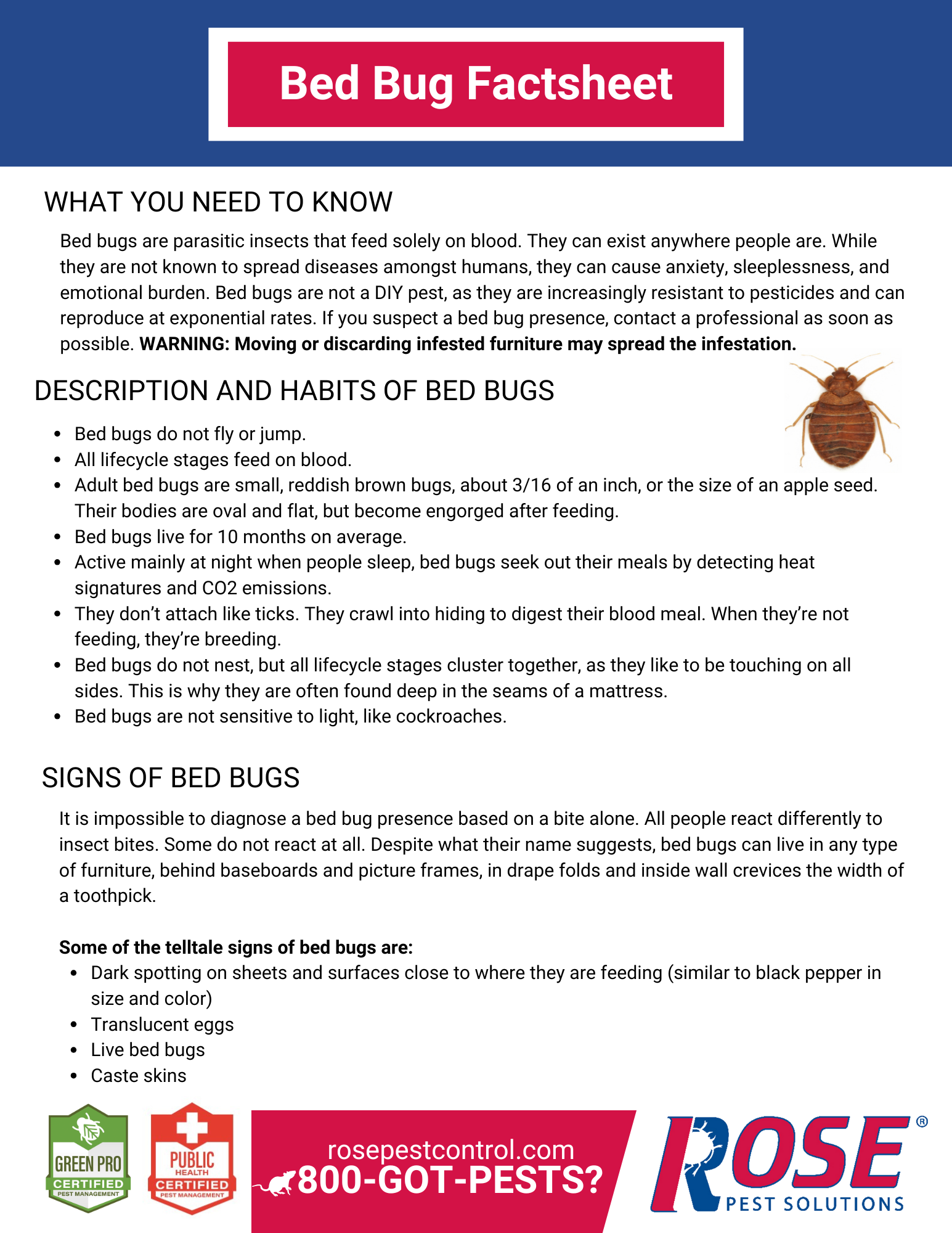The Best Strategy To Use For Bed Bug Services
Table of ContentsBed Bug Services Fundamentals ExplainedSome Ideas on Bed Bug Services You Need To KnowTop Guidelines Of Bed Bug ServicesBed Bug Services Can Be Fun For Everyone
A professional bed bug inspection is a meticulous process and relies on expertise. Bed bugs are small, elusive, and adept at hiding that often dwell in small hiding places in furniture and walls. Because of their stealthy behavior, meticulous assessment is critical to accurately locate and quantify infestations. Professional inspectors employ a range of techniques, tools, and expertise to identify infestations early, stopping infestations from worsening.The first step in a proper inspection involves knowing the habits and life cycle of bed bugs. Bed bugs belong to the Cimicidae family and progress through eggs, several nymphs, and adult stages. Adults are typically small, oval-shaped, reddish-brown, wingless, and equipped with long legs and antennae. Their feeding apparatus injects anticoagulants while drawing blood, resulting in clusters of itchy bites. Knowing these traits guides professionals in locating infestations.
Early detection is essential for preventing large infestations. Professionals look for specific indicators such as fresh droppings that resemble small ink dots, old stains, shed skins, eggs, or eggshells (Bed Bug Services). Even one female can produce dozens of eggs quickly, resulting in serious outbreaks. Evidence of shed exoskeletons or leftover eggs signals ongoing activity and demands thorough examination
Preparing for an inspection demands meticulous preparation. Inspectors often advise removing items that block access, which improves access to furniture and baseboards. Bedding and linens may be treated with heat before inspection, and then kept in plastic bags to maintain cleanliness. Wall decor, mirrors, and pictures may need to be removed to check hiding places. Vacuuming furniture and floors can remove loose pests, and vacuum bags should be discarded carefully to avoid spreading.
Rumored Buzz on Bed Bug Services
The inspection itself is systematic and thorough. Inspectors focus on sleeping areas like beds, headboards, and mattresses, looking closely at creases, joints, and folds. Upholstered furniture, including sofas and recliners, is inspected thoroughly, including underneath and inside cushions. Baseboards, moldings, the edges of wall-to-wall carpeting, electrical outlets, Discover More closets, and storage areas are methodically checked, as these can be frequent hiding places.
Specialized tools enhance detection accuracy. Flashlights, magnifying lenses, multi-tools, and mirrors help inspect hard-to-see areas. Monitoring devices like interceptor traps or sticky pads aid in identifying infestation trends. Some companies use Website detection dogs, which detect even small infestations, distinguishing them from old evidence.

Meticulous documentation plays a critical role. Inspectors maintain detailed notes of findings, areas affected, and next steps. This supports transparency and offers proof of inspection. Residents are often advised not to remove blood-stained sheets or vacuum infested areas, as this ensures accurate results.
After inspection, a monitoring plan may be implemented to follow up on findings. Continuous monitoring assesses the effectiveness of treatment, and interviews with my explanation household members provides additional insight. Cooperation from residents ensures accuracy.
Facts About Bed Bug Services Revealed

Professional inspections are more reliable than self-inspections. Trained inspectors spot subtle signs overlooked by untrained eyes, prevent misdiagnosis, and give peace of mind.
Bed bug inspections are particularly important in hotels, dormitories, multi-unit apartments, and senior living facilities. Inspectors assess all connected areas to confirm complete assessment (Bed Bug Services). This supports comprehensive control
In summary, a professional bed bug inspection includes identifying the pest, readying the environment, inspecting meticulously, employing tools, maintaining records, and ongoing monitoring. Each step supports early detection, informs treatment, and reduces future risk.
The 15-Second Trick For Bed Bug Services
